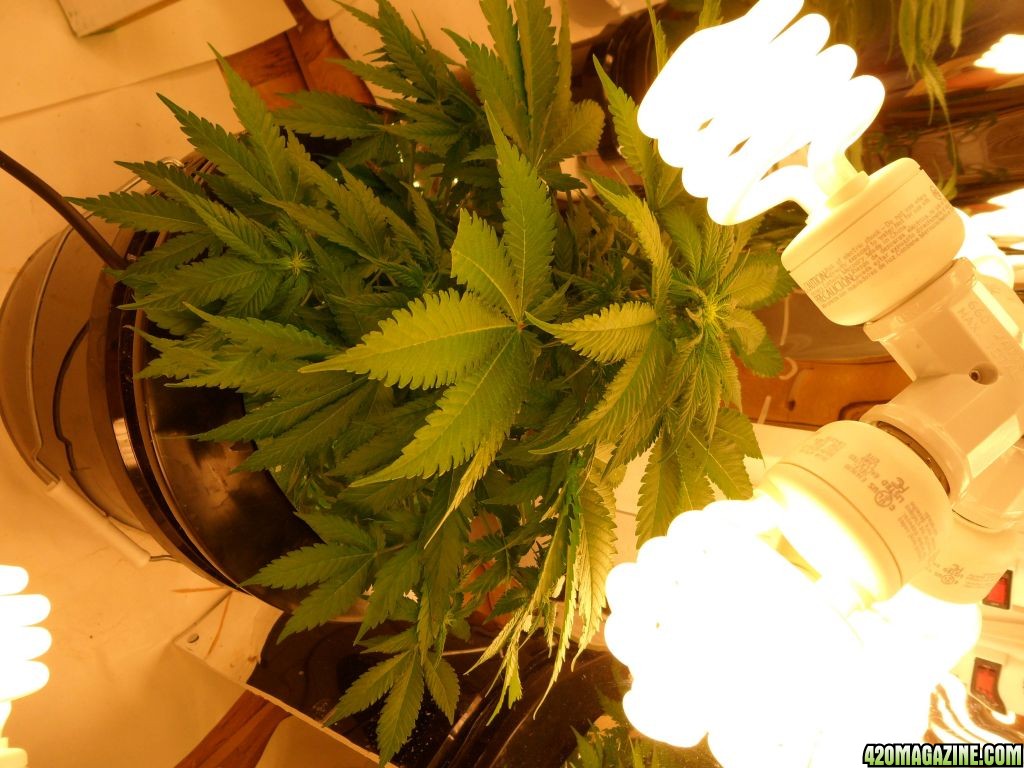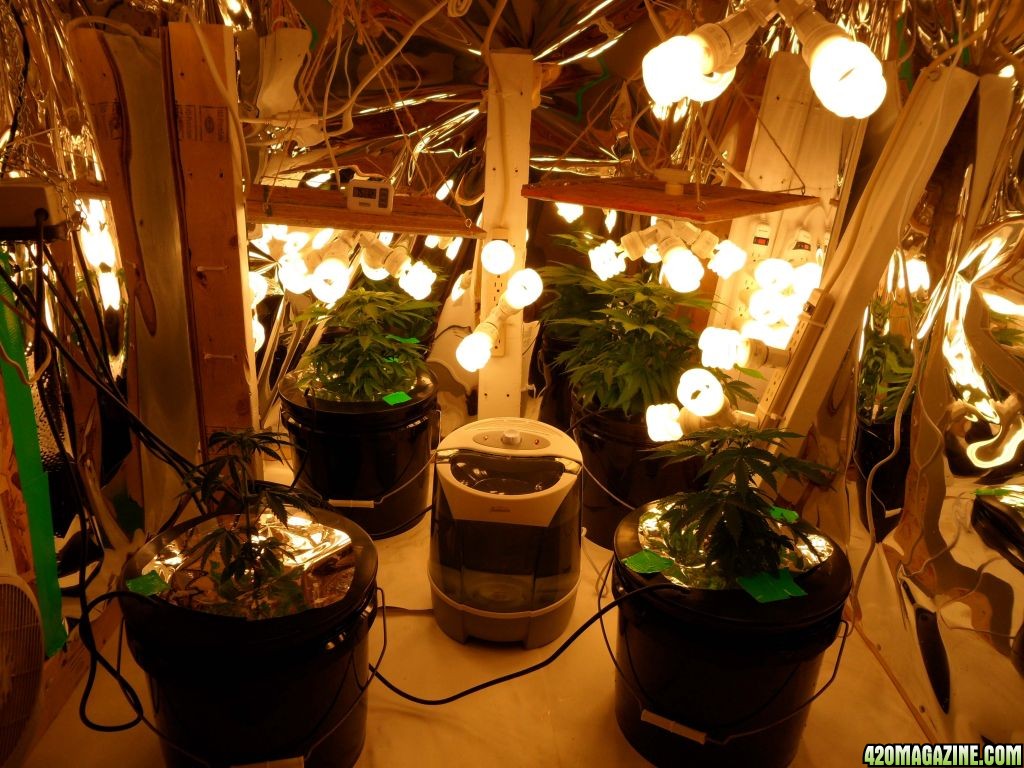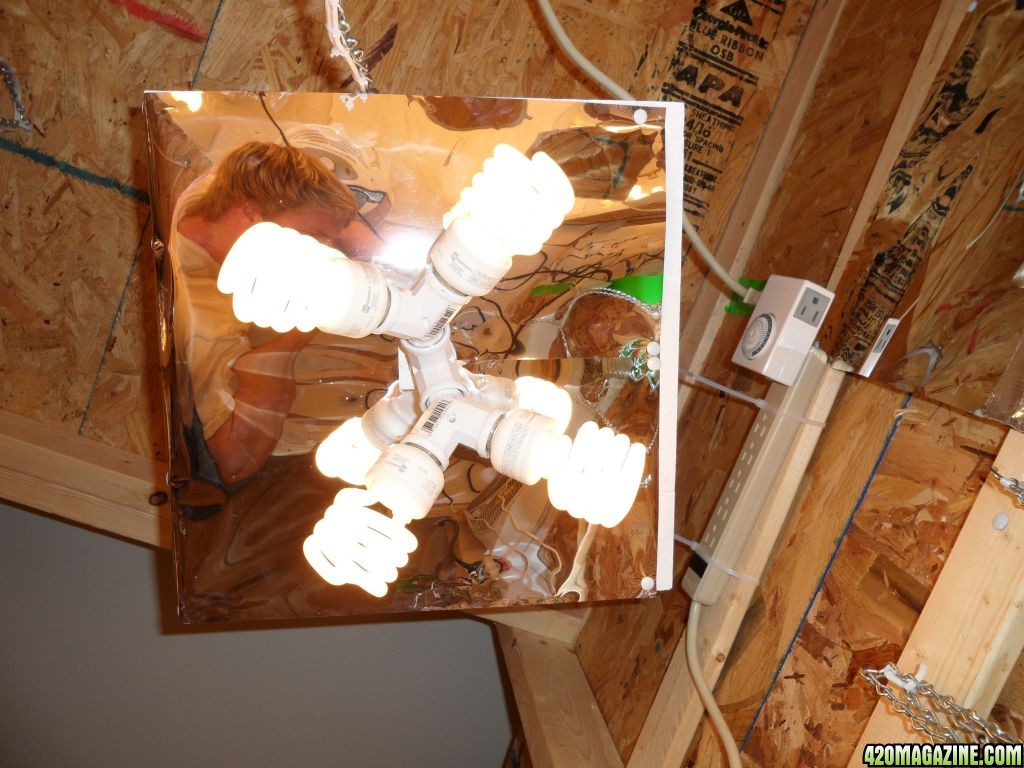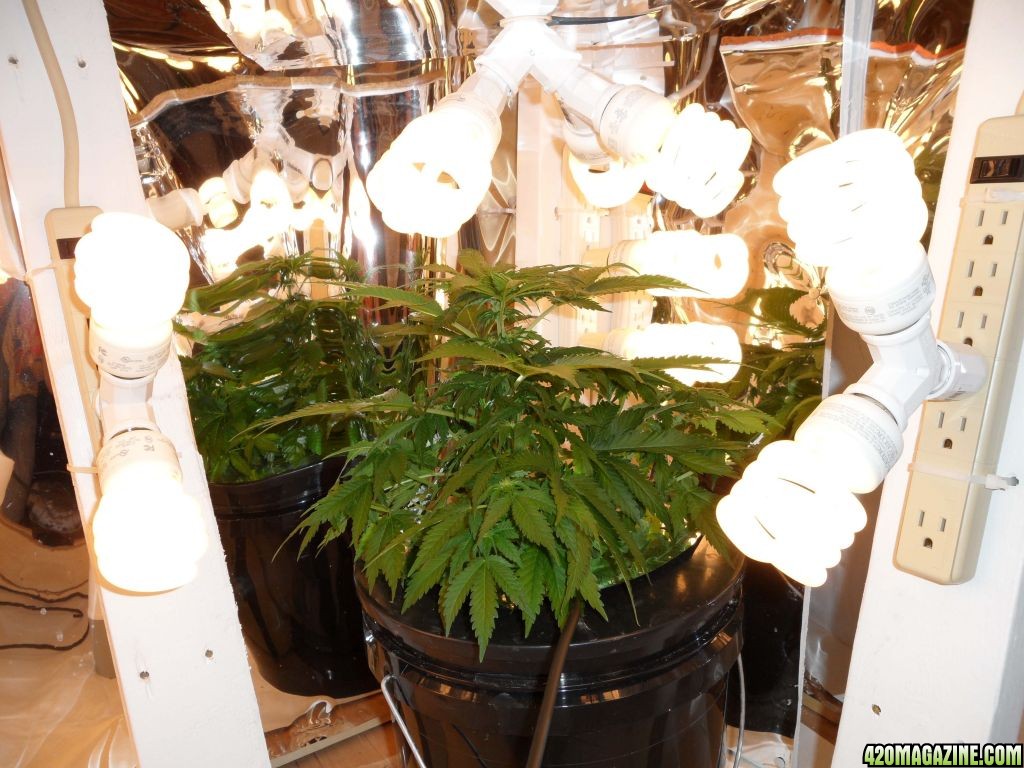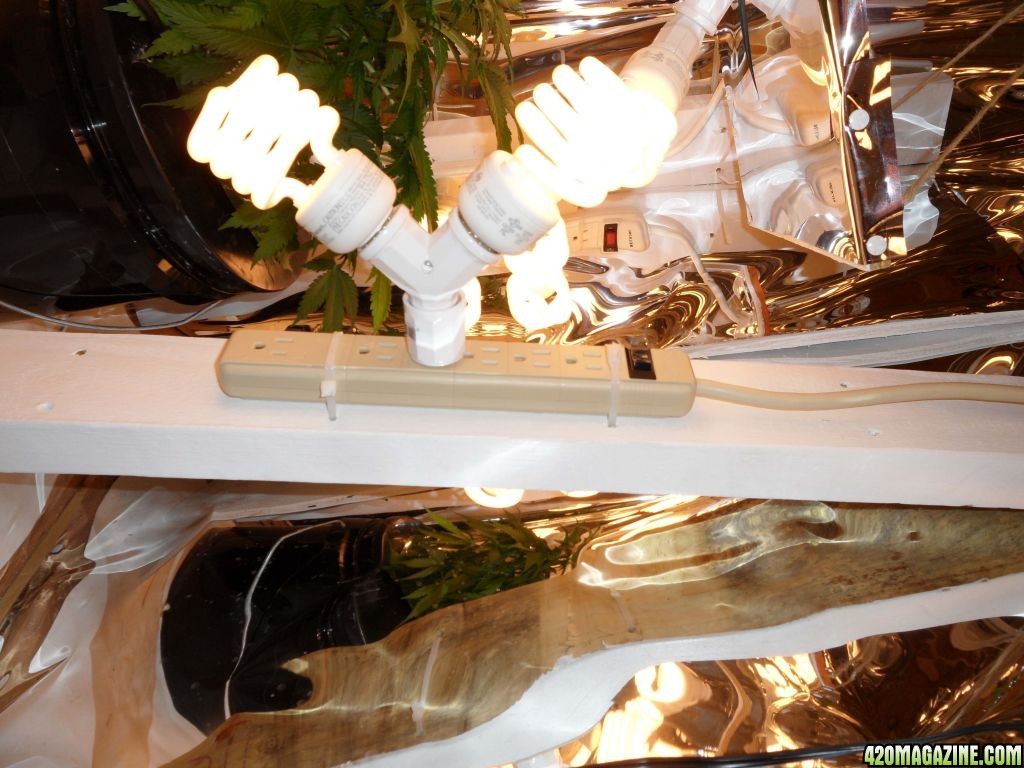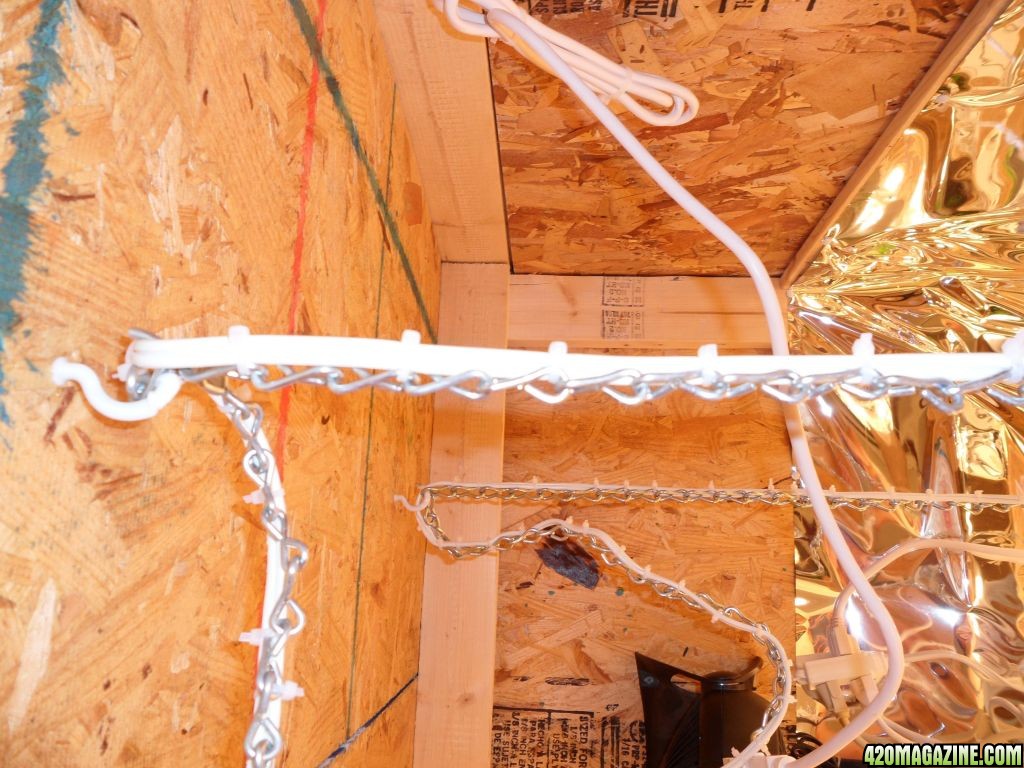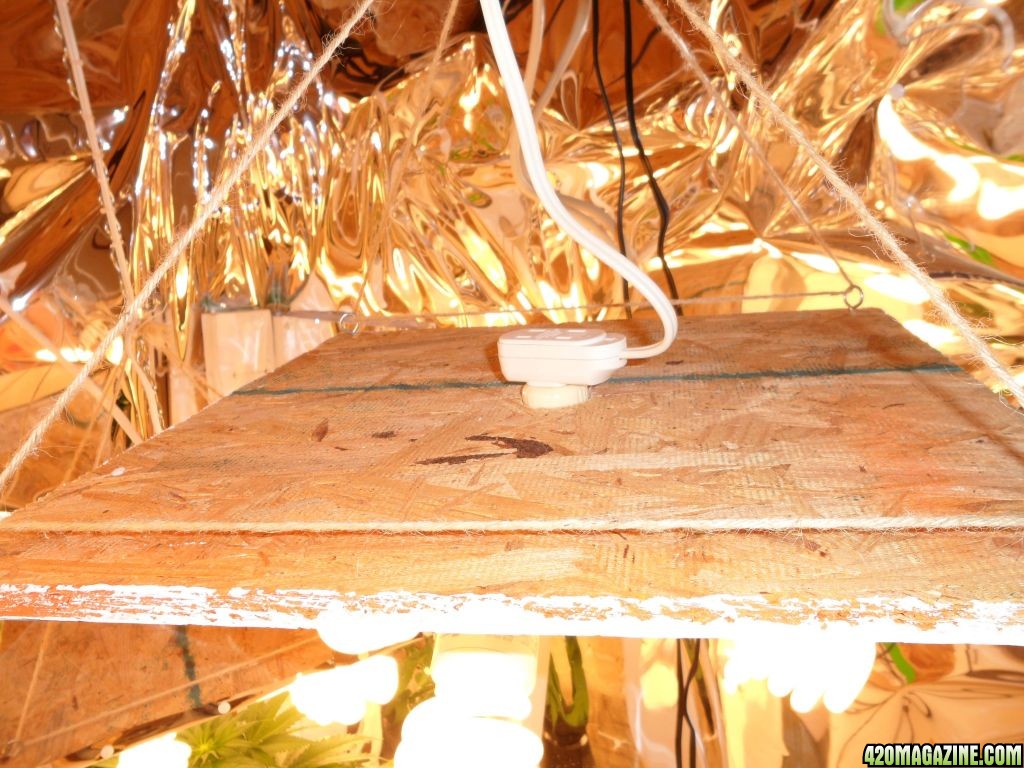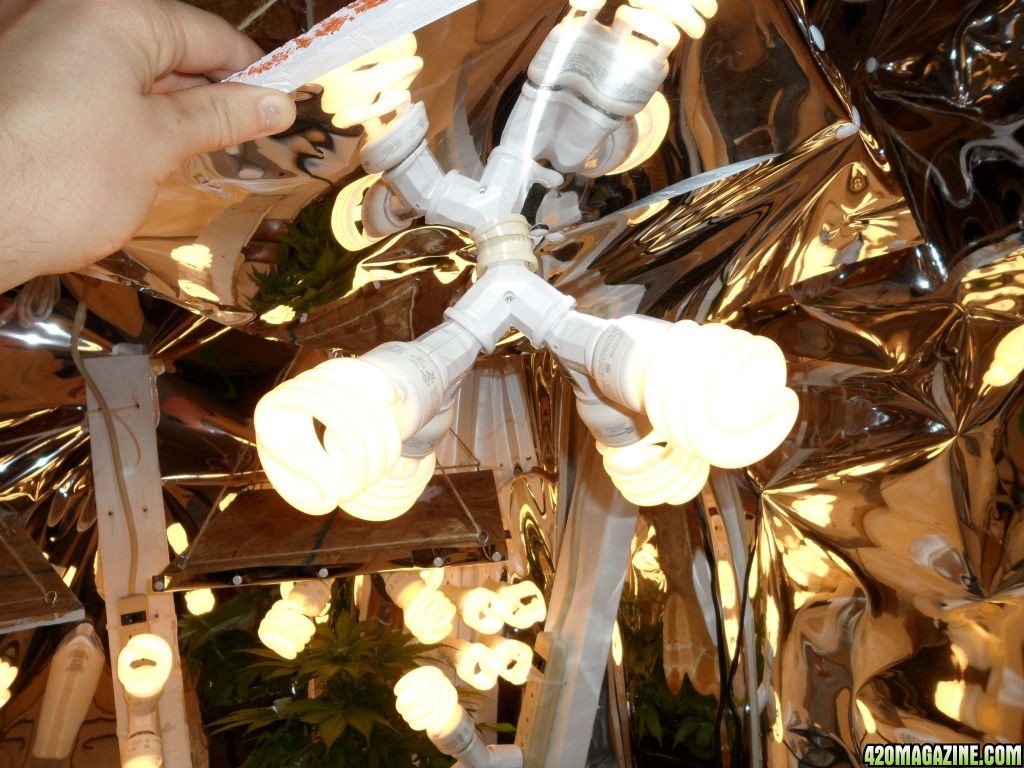Deacnbleu
Well-Known Member
I grow in a converted Black & Decker tool cabinet fitted with intake, mover and exhaust fans salvaged from old computers.
LED's are too expensive (although I do have a red & blue 12X12 panel inside also) and CFL's still create a good bit of heat for a small area. I use a total of 6 CFL bulbs, 27 watt. Ambient temp is usually 79 degrees F while inside the cabinet ranges from 80 to 90 during the average 18/6 schedule and not higher than 30% humidity.
Would like to hear from other limited space, CFL growers out there.
LED's are too expensive (although I do have a red & blue 12X12 panel inside also) and CFL's still create a good bit of heat for a small area. I use a total of 6 CFL bulbs, 27 watt. Ambient temp is usually 79 degrees F while inside the cabinet ranges from 80 to 90 during the average 18/6 schedule and not higher than 30% humidity.
Would like to hear from other limited space, CFL growers out there.



